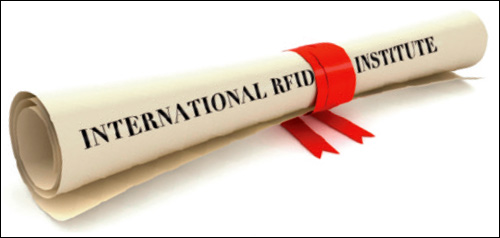Last month, the U.S. Federal Trade Commission (FTC) approved—after more than nine months of deliberation—Honeywell International‘s $600 million acquisition of Intermec Technologies, a provider of bar-code scanners and radio frequency identification readers. The FTC’s one stipulation was that Honeywell would have to license its patents related to scanning two-dimensional bar codes to Datalogic, an Italian bar-code technology provider, for 12 years. The FTC said licensing the patents would enable Datalogic to enter the U.S. market and “restore the competition lost due to the merger.”
The acquisition of Intermec sets Honeywell up as the only serious rival to Motorola Solutions in the automatic-identification market. For the past seven years, Honeywell and Motorola have been gobbling up smaller auto-ID companies, which have made some acquisitions of their own.

Honeywell is a $37 billion conglomerate, based in Morristown, N.J. The company got its start in 1885 with the invention of the damper flapper, a thermostat for coal furnaces. Today, Honeywell is best known for its home thermostats, but it also has aerospace and defense, automotive, construction and maintenance, energy, health care, industrial process control, and safety and security divisions. Intermec will become part of the Honeywell Scanning & Mobility division, and it will likely take six months to a year to complete the integration.
Honeywell jumped into the market for bar-code scanners in 2007, when it acquired Hand Held Products. A year later, it acquired Metrologic Instruments, a supplier of data-capture hardware, for $720 million. At the time, Metrologic had $240 million in sales, but the two acquisitions set Honeywell up as a legitimate rival to Motorola. In 2011, Honeywell purchased EMS Technologies for $491 million. EMS offered wireless solutions for mobile networking, rugged mobile computers and satellite communications. It also had an RFID business and owned LXE, which made vehicle-mounted terminals and passive ultrahigh-frequency RFID readers.
Intermec made a few of its own acquisitions. In 1997, it purchased Norand and United Barcode Industries. That year, it also acquired passive UHF RFID patents from IBM. And a year later, Intermec acquired Amtech Corporation’s high-frequency RFID business, Amtech Transportation Systems.
In 2007, Motorola acquired Symbol Technologies, one of the largest providers of bar-code scanners and RFID hardware. Symbol had purchased several bar-code and RFID companies over the years. In 2000, it acquired rival Telxon, strengthening its position in the market for handheld smart terminals that could scan bar codes. In 2004, with Walmart pushing suppliers to tag pallets and cases, Symbol purchased Matrics, a small maker of RFID tags and readers, for $230 million, giving it a foothold in the nascent RFID market.
Last year, Motorola increased its influence in the mobile RFID reader market by purchasing Psion for $200 million. In 2000, Psion, a London-based maker of smart terminals, bought Teklogix, a Canadian company that made rugged bar-code handheld devices.

All this consolidation leaves Honeywell and Motorola as the two biggest players in the auto-ID space. Motorola currently has the largest market share for passive UHF RFID readers. Intermec has not been as aggressive in the market during the past three years as it was in the early days of the Walmart initiative.
For both companies, bar codes still represent the largest portion of their auto-ID business. With companies still replacing linear bar-code scanners and introducing some 2-D bar-code scanners, that is unlikely to change. But as the RFID market picks up, it is likely these two giants will ramp up their efforts and go head to head for many of the largest deals.
The competition between two dominant players could be good for end users and for RFID adoption in general. Competition leads to competitive pricing, and both companies have the resources to invest in new, more advanced RFID products. But it remains to be seen whether Honeywell or Motorola will invest in the RFID market, where sales are a tiny fraction of the overall auto-ID business. If both do, there could be quite a battle for supremacy, and one could emerge the “gorilla”—author Geoffrey Moore’s term for the dominant technology supplier in a market—in the RFID sector. Moore says a gorilla is necessary for the technology to achieve mass adoption.
If only one company invests in RFID, that company will likely be richly rewarded. A gorilla typically gets more than 50 percent of the market for technologies that reach mass adoption. If neither Honeywell nor Motorola focus on their RFID divisions, that could open the door for a smaller reader manufacturer, such as Impinj in the United States or CAEN RFID in Europe, to achieve gorilla status. Stay tuned.
Illustration: iStockphoto

